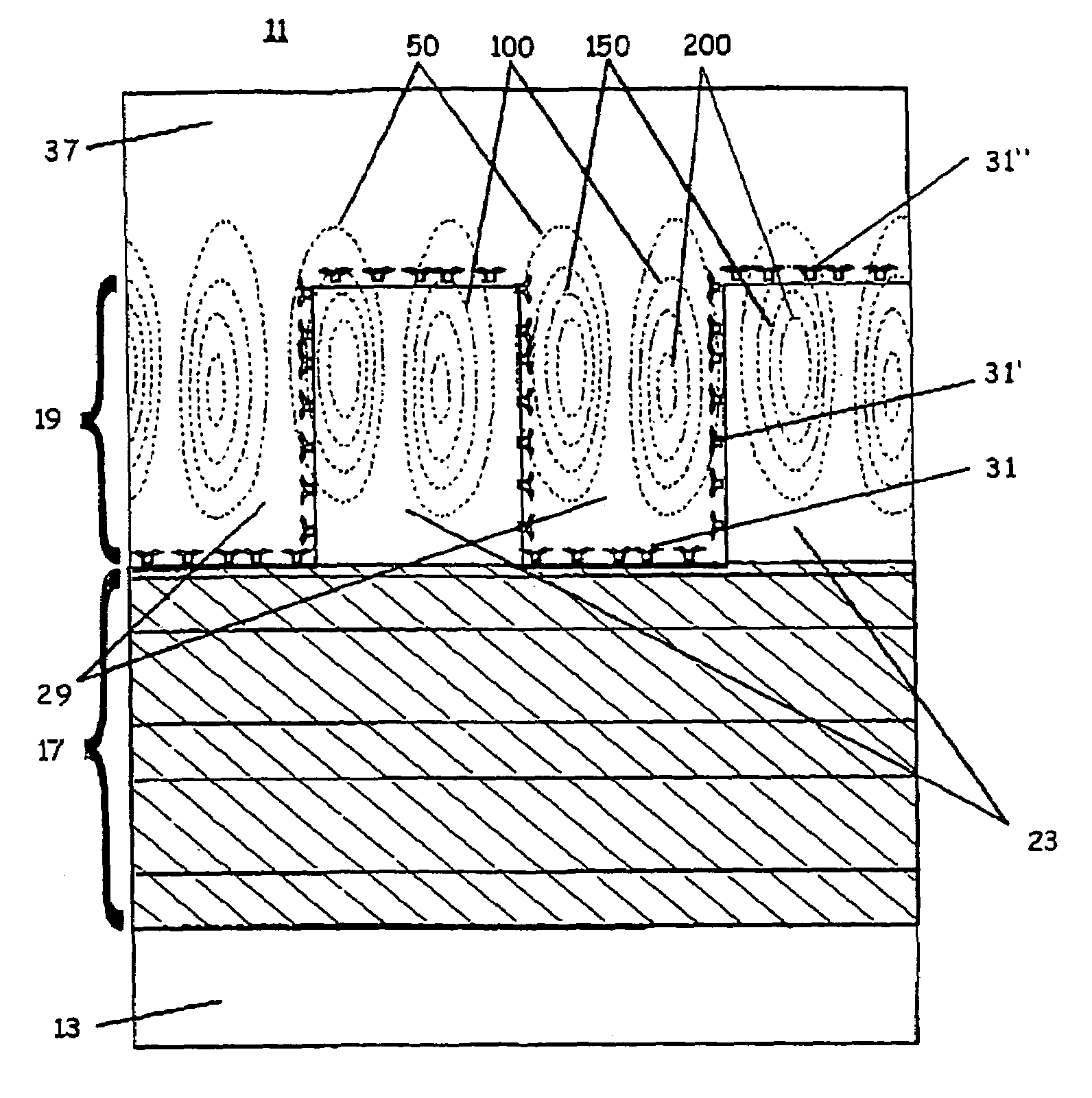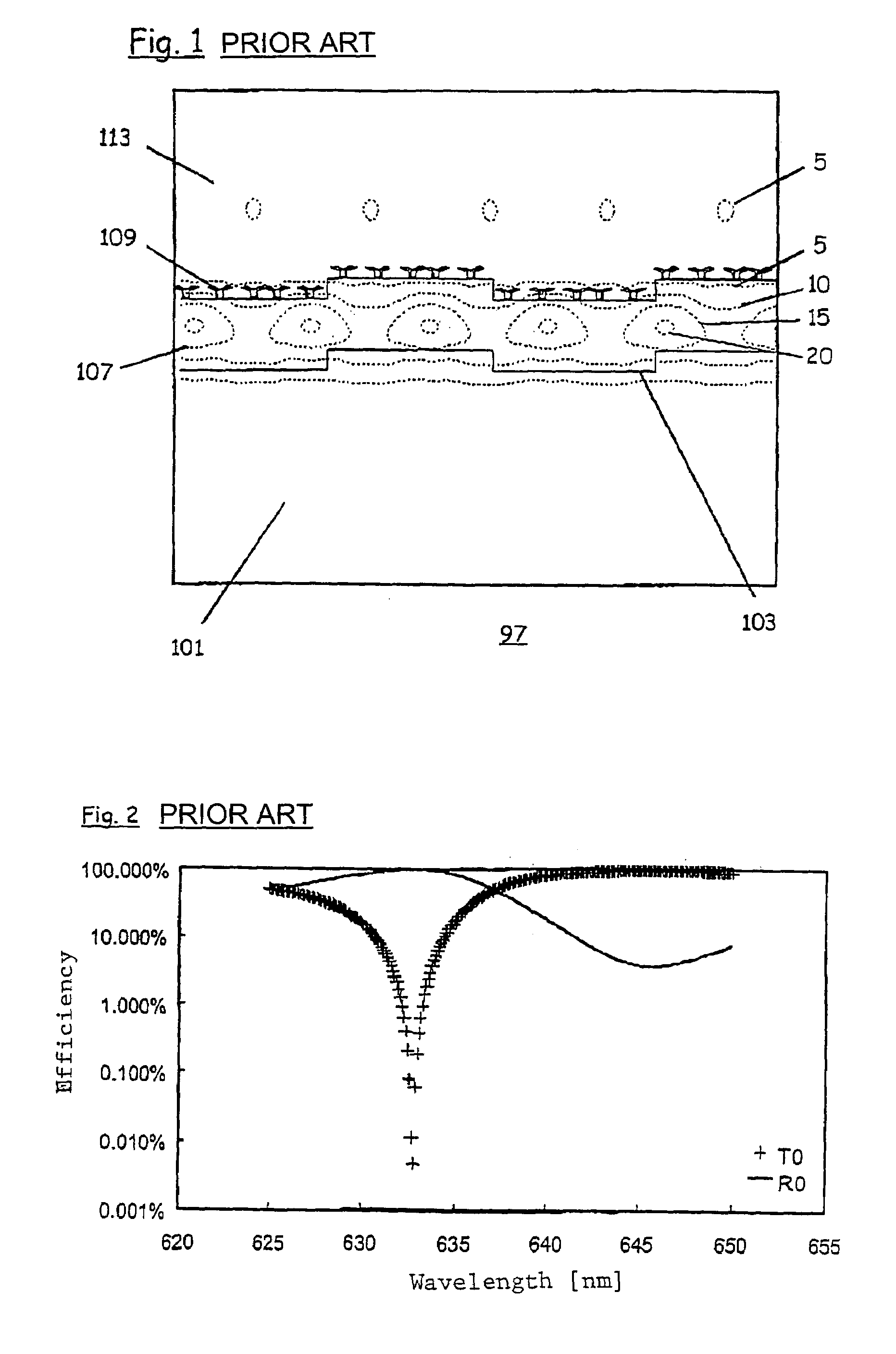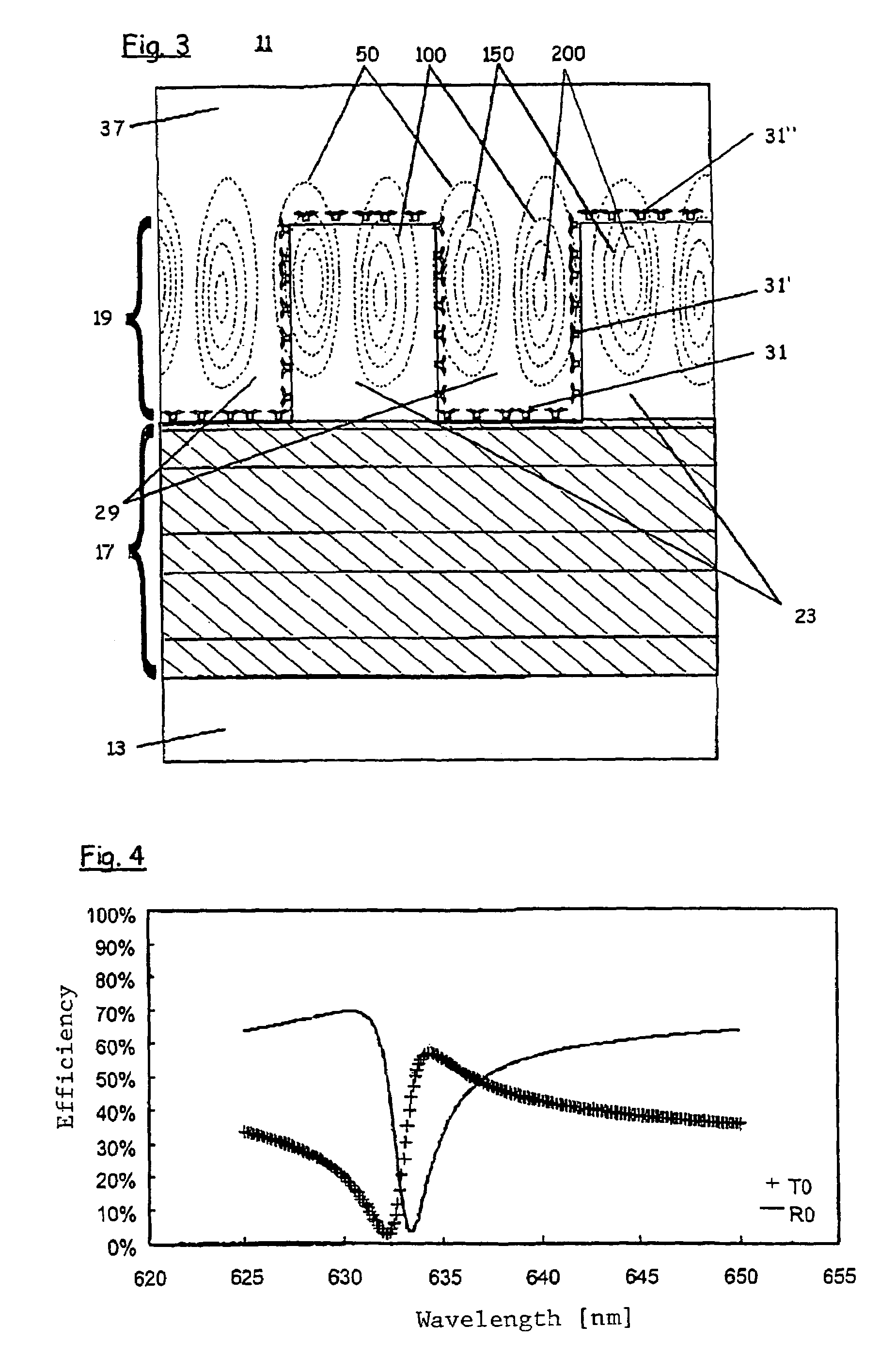Method for generating electromagnetic field distributions
a technology of electromagnetic field and distribution method, applied in the field of optical sensors, can solve the problems of light scattering, reduced light passing through the waveguide, and limited material choice for the wave-conducting layer,
- Summary
- Abstract
- Description
- Claims
- Application Information
AI Technical Summary
Benefits of technology
Problems solved by technology
Method used
Image
Examples
Embodiment Construction
[0057]The following examples describe this invention in detail with reference to the diagrams.
[0058]For a better understanding of the underlying concept of this invention it will be helpful to first analyze in depth a typical prior-art example as disclosed in the Novartis application. That type of system 97 is schematically illustrated in FIG. 1. It comprises a structured substrate 101 with a refractive index of n=1.52 and incorporating a periodic grating with a grating periodicity of 360 nm and a grating depth of 38 nm. The structured substrate 101 is coated with a dielectric layer having a refractive index of n=2.2 and a thickness of 130 nm. The refractive index of that layer is thus significantly higher than that of the substrate. In this case the grating profile of the substrate is carried over to the surface that constitutes the interface with the surrounding medium, hereinafter referred to as the superstrate 113. The drawing also shows biological binder molecules 109 as used f...
PUM
 Login to View More
Login to View More Abstract
Description
Claims
Application Information
 Login to View More
Login to View More - R&D
- Intellectual Property
- Life Sciences
- Materials
- Tech Scout
- Unparalleled Data Quality
- Higher Quality Content
- 60% Fewer Hallucinations
Browse by: Latest US Patents, China's latest patents, Technical Efficacy Thesaurus, Application Domain, Technology Topic, Popular Technical Reports.
© 2025 PatSnap. All rights reserved.Legal|Privacy policy|Modern Slavery Act Transparency Statement|Sitemap|About US| Contact US: help@patsnap.com



